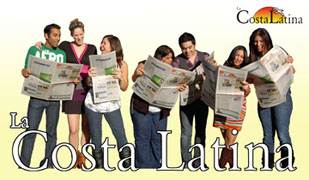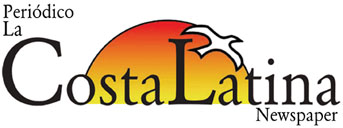 Join La Costa Latina
on
Facebook
Join La Costa Latina
on
Facebook


Advertise with us!
850-494-7899
|
 |
Advertise with us! 850-494-7899 |
|---|
Los Carnavales en México |
Mexican Carnivals by David Peñaflor Mexican Folklorists  Martes de Carnaval ''Mardi Grass'' in México has many contrasts and representations. This festivity had its origin in Europe as a pagan ''Bacanal'' feast in which all the social classes participated. When Christianity arrived this festivity was permitted as a ''Carnal Feast'' ''La Fiesta de la Carne'' celebrated on the eve of Ash Wednesday before starting a rigid lent (cuaresma) of fasting and reflections as a spiritual preparation to celebrate holy week . Martes de Carnaval ''Mardi Grass'' in México has many contrasts and representations. This festivity had its origin in Europe as a pagan ''Bacanal'' feast in which all the social classes participated. When Christianity arrived this festivity was permitted as a ''Carnal Feast'' ''La Fiesta de la Carne'' celebrated on the eve of Ash Wednesday before starting a rigid lent (cuaresma) of fasting and reflections as a spiritual preparation to celebrate holy week .The Carnivals in the cities of Mazatlán, Veracruz and Mérida are characteristic for their marked European influence where the sensuality of the men and women is exhibited in public. In these carnivals there are beautiful Queens ''Reinas'' and Charming Ugly Kings ''Reyes feos'', they also have parades with allegoric floats and dancers dancing on the streets. A few years ago I was able to observe, in the Port of Veracruz, the rehearsals for such dances with a frank imitation with the dances of the Brazilian Carnival in Rio de Janeiro. The Indian towns add themselves to these festivities but with totally different perspectives, because their festivities are filled with ancestral beliefs such as the Pinotepa de Don Luis in Oaxaca State, where the hunting of a jaguar-tiger- whose mask has instead of eyes, mirrors, that become its principal defense against its hunters. There is also ''comparsas'' dancers with masks of doves and other animals. In he carnival of San Juan Chamula, in the State of Chiapas, the principal costume represents the ''Mash'', which is the mono araña (spider monkey) which abounds in the region and takes human lives. As Tuesday ends they celebrate the ''Purification'' (Purificación) ceremony which consists in crossing, without shoes, a road filled with burning coals. To close, I will mention the mestizos carnivals of the towns of the state of Morelos where they wear showy clothes of ''Chinelos'', that consist of colorful tunics or gowns, hats shaped like an inverted cone and masks that represent and satirize Spaniards and Arabs with pointed beards. To the rhythm of the wind band they dance in the public plazas without any choreography ''El Brinco del Chinelo'' (The Jump of the Chinelo) for hours and hours while waiting for Ash Wednesday. |